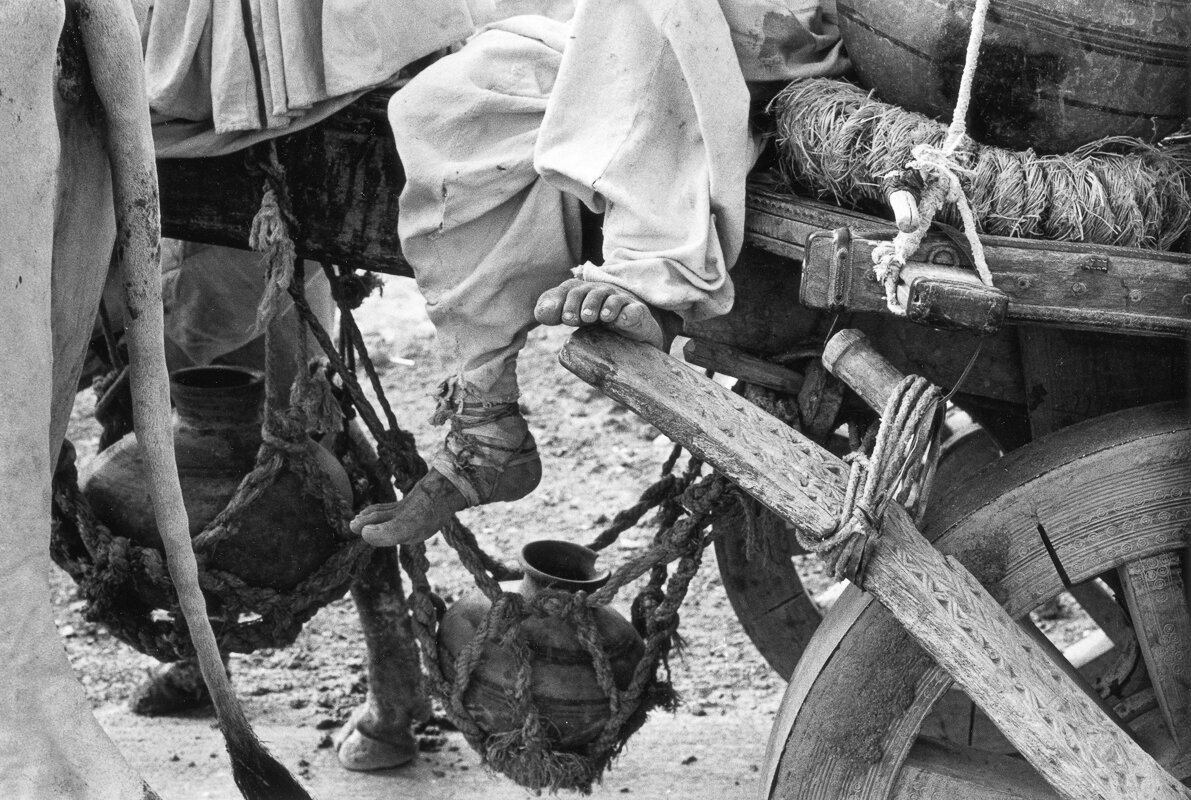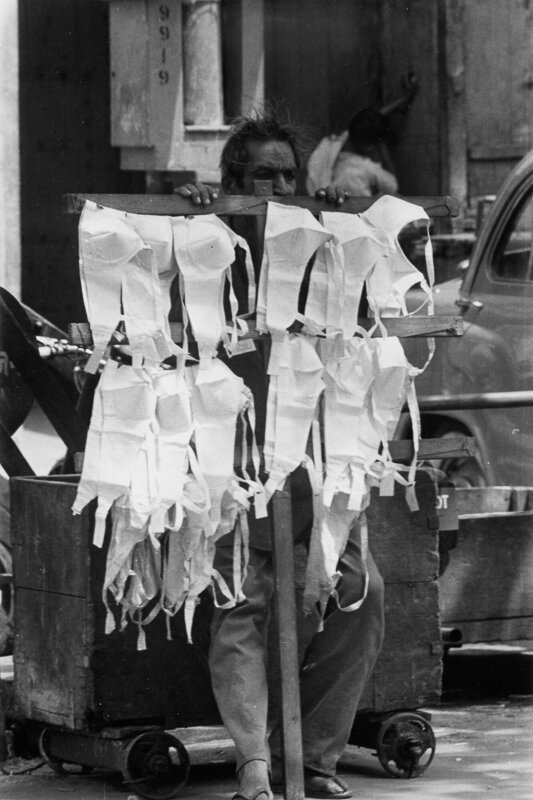BHUPENDRA KARIA
b. 1936, India
d. 1994, America
b. 1936, India
d. 1994, USA
Bhupendra Karia (1936-1994) was known not just as a photographer, but also as an artist, teacher, theorist, and curator. His extensive photographic documentation of India during the 1960s and ’70 offered a novel insight into the social and economic conditions of India, reflecting a unique approach distinct from the photographic trend of street photography prevalent at the time.
Karia attended the Sir JJ School of Art in Bombay, where he studied painting, graphics, and history and after graduating in 1956, he continued his education in history and aesthetics at the Tokyo University of Fine Arts. On his return to India, he taught fine art and headed the graphics department and at the MS University, Baroda from 1964-66 and then moved to California to head of the photography and graphic arts department at the University of Southern California.
As Karia started focusing more exclusively on photography, he undertook extensive photographic journeys in the second half of the 1960s and early 1970s, covering by his accounts some 80,000 miles across India’s rural landscape. His early motivations for these trips seem to have been fuelled by an anthropological impulse to explore and record rural India and document its native traditions of textile, pottery, and architectural decoration. As he spent more time in the villages and countryside, he began to broaden the context of his work, weaving together observations of rural and small town Indian life with larger concerns about social, political, and environmental challenges facing contemporary India. It was during this time that Karia produced his three major works, Old India, New India, and Bombay.
Another notable series from this period is Population Crisis, which was commissioned by Cornell Capa for Cornell University’s International Population Program and Capa’s International Fund for Concerned Photography. Capa enlisted Karia’s collaboration in establishing the International Center of Photography in New York in 1974. Karia held many positions at ICP including Curator, Director of Special Projects, and Associate Director. He went on to curate over 45 exhibitions and publish 15 titles.
Applying his curatorial eye to his own work in the mid 1970s, Karia prepared his photographic portfolio – a selection of 74 photographs from his archive of nearly a quarter million images made throughout his career. The images, which he called “the merger harvest of [his] first 20 years in photography”, were no longer placed within the context of social analysis or photojournalistic narratives but presented to reveal what Karia felt was his subjective understanding of India, combing his rigour for aesthetics with his aspiration for a truthful representation of the country.
Karia’s photographs have been exhibited at Magazzino delle Idee, Trieste; The Art Gallery of Ontario, Toronto; sepiaEYE, New York; Jhaveri Contemporary, Mumbai; FOCUS Festival, Mumbai; The Florida Museum of Photographic Arts, Tampa; Rossi Rossi, London; and Delhi Photo Festival, Delhi. His photographic works are part of the permanent collections of the Cincinnati Art Museum; the Museum of Modern Art, New York; the Museum of Contemporary Art, Milan; the Fogg Museum, Boston; the Lalit Kala Akademi, New Delhi; and private collections around the globe.





















